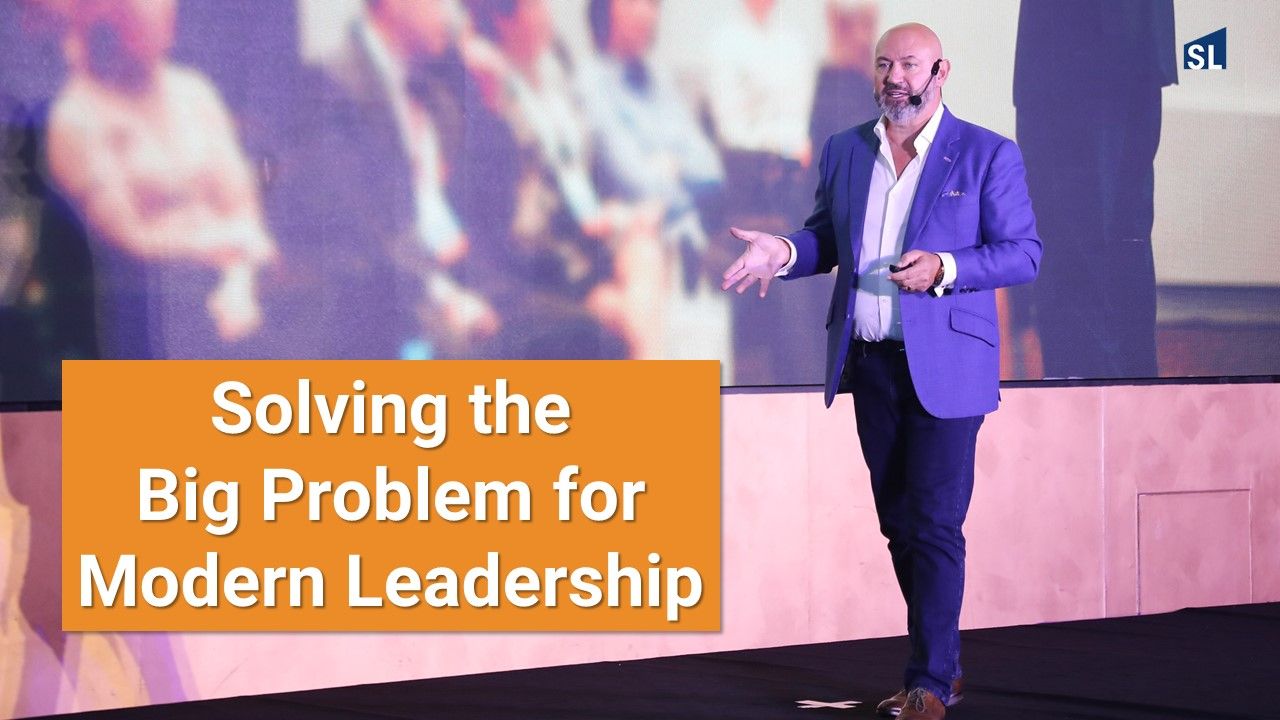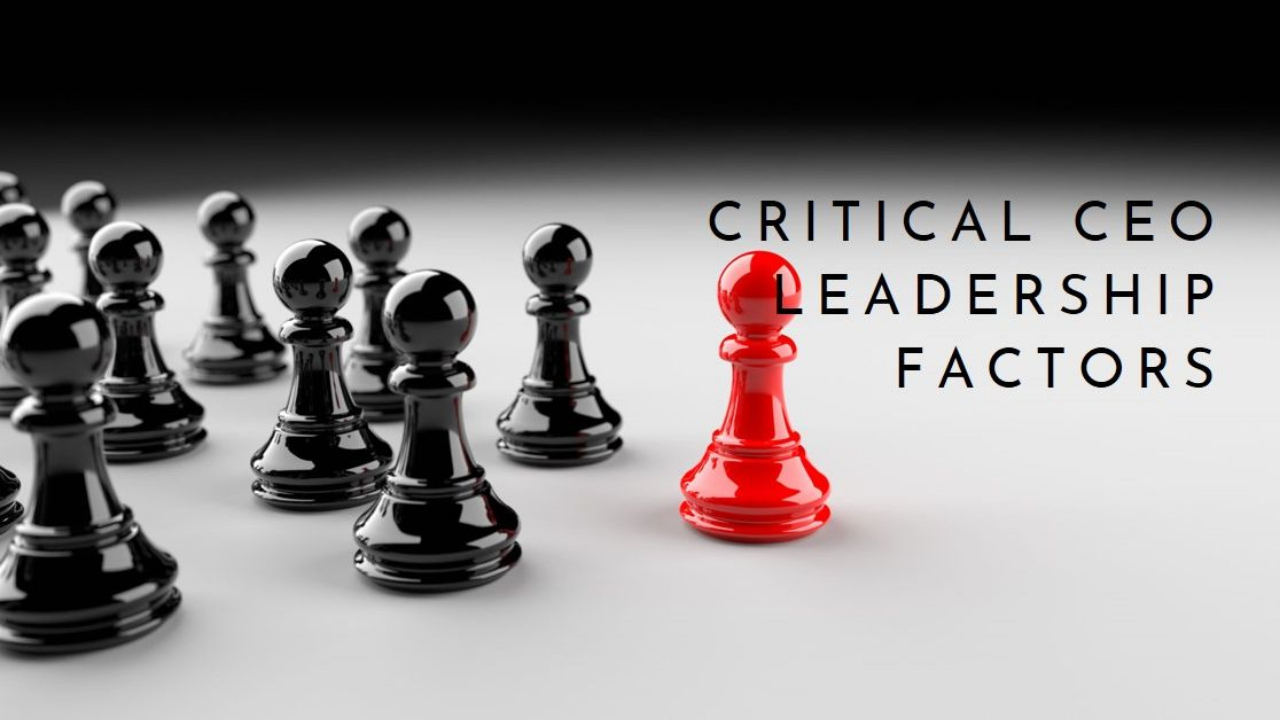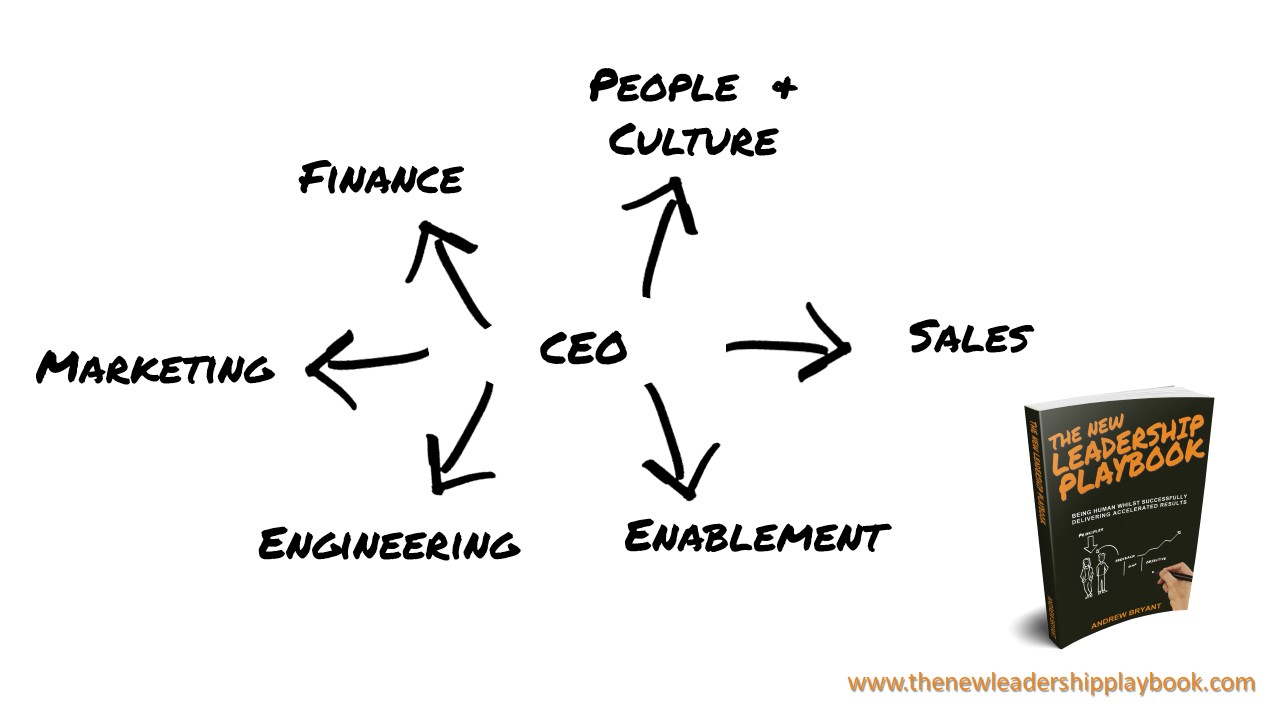Self Leadership and
The New Leadership Playbook
Blog by Andrew Bryant
Solving the Big Problem for Modern Leadership

It can be argued that traditional hierarchical management structures are failing to deliver in terms of employee engagement, retention, creativity, and productivity. In the current environment, self-leadership emerges as a beacon for modern leaders and managers. But what is the big problem and how does adopting a self-leadership approach solve for this?
In the AI era and with the reality of the hybrid workplace, the traditional hierarchical management system is not just outdated; it's a ticking time bomb.
A top-down approach with decisions trickling down, with little or no feedback or innovation from lower-level employees results in rigidity. In an AI-driven world, where rapid adaptation is key, this rigidity can be fatal.
The Big Problem is Trust
In Self Leadership: How to Become a More Success, Efficient, and Effective Leaders from the Inside Out (McGraw-Hill 2012) "Self-leadership is defined as:
"The practice of intentionally influencing your thinking, feeling, and actions to
...
A Model for Transforming the Executive Leadership Team

The Executive Leadership Team (ELT), typically consisting of the CEO, CFO, COO, CPO, CMO, CRO, CTO, and other CXOs, should be the most important team in the company. Why is it then that the ELT is often:
"The worst performing team in the whole company!"
The answer is that most Executive Leadership Teams are not structured as a team but rather as a workgroup. A team's success is dependent on the collaboration of each member of the team towards a shared goal. In short,
"Nobody wins unless everybody wins!"
In a workgroup, each member focuses on their silo of responsibility and measures success in terms of their own KPIs or OKRs. In a workgroup, each member reports to the CEO but is competing for attention and resources. This structure results in little or no collaboration and can promote a culture of internal competition and distrust.
A High-Performing Executive Leadership Team
“I think I have a job for you", he said.
"I have taken on a new CEO role, and I need my disconnecte...
Leadership Transformation, and the Rise of Self-leadership, in the Gulf Cooperation Council Countires (GCC)

Having recently delivered a leadership keynote speech in Dubai, U.A.E, I am filled with admiration and optimism for the future of the Gulf Cooperation Council (GCC) countries and Jordan. The region, steeped in a rich tapestry of history and tradition, is on the cusp of transformative change, and the dual pillars of self-leadership and leadership are pivotal in this journey.
Navigating the Winds of Change - Leadership in the Gulf, Past and Future

The GCC, established in 1981, was not merely an economic alliance. It was a testament to the shared vision and camaraderie of its founding nations: Bahrain, Kuwait, Oman, Qatar, Saudi Arabia, and the United Arab Emirates. Over four decades, the GCC has evolved, navigating complex geopolitical terrains while strengthening intra-regional ties.
In today's dynamic global scenario, the GCC stands at a crossroads. The transition from oil-centric economies demands not just economic reforms but a paradigm shift in mindset. This is where the essenc...
Ditch the Leadership Clichés: It’s time to Embrace Nuance

In a world that craves simplicity and instant gratification, it can be hard to ditch the comforting black-and-white leadership mantras and clichés, but they are a thing of the past or should be.
The present Global complexity demands leaders who can navigate the gray, and understand the importance of nuance. Leadership is no longer about being the loudest voice in the room or always having the answers. It's about embracing ambiguity, understanding the subtleties of human behavior, and recognizing that success often lies in considering a new perspective.
Imagine, if you will a tightrope walker on a cable strung between two city blocks. He or she must be confident in their ability whilst at the same time accounting for the wind and movement of the cable. The act of balancing and moving forward requires a laser focus on the destination while being present swaying back and forth above a potentially fatal drop. The tightrope walker cannot say, I will shift my weight to the right, they must...
The CEO and Executive Leadership Team’s Role in Creating a Culture of Self-leadership

CEOs are typically driven by pleasing the board. The board is usually pleased with positive quarterly results. These results will only be sustainable if the CEO and their Executive Leadership Team (ELT) effectively lead the people within the organization.
Management guru Peter Drucker said it best when he wrote:
"The only definition of a leader is someone who has followers."
This truth highlights that leadership results from a shared psychological group membership (culture) rather than intrinsic to one individual.
This realization triggers the question, “What is the best culture, and how do we create it?”
Imagine a culture where management and employees experience a feeling of autonomy and ownership, thus contributing their best selves toward a shared vision with clear objectives.
The foundation of such a culture is the practice of self-leadership. Building a culture of self-leadership within an organization is not just a trend; it's a strategic approach that has proven t...
Self-Leadership: The Key to Enhanced Productivity in a Post-Pandemic and Digital Age

In the wake of the global pandemic, the world has seen an accelerated shift toward digitalization. This shift has brought about new challenges and opportunities in the realm of productivity.
Increased productivity means greater output from the same amount of input. It means higher efficiency with which a company or economy can transform resources into goods and services. In short:
"Enhanced productivity is the opportunity to create more from less."
A sustainable increase in productivity occurs when individuals and teams can complete their work efficiently and tackle more complexity, whilst taking care of physical and mental health.
As we navigate this new landscape, the concept and practice of self-leadership have emerged as critical factors in enhancing productivity.
The Connection Between Self-Leadership and Productivity
Self-leadership is the learned ability to intentionally influence ourselves to achieve our objectives (Bryant and Kazan 2012). Rather than being an abstrac...
Leadership Insight: Why Would We Follow You?

This story is so familiar that I am sure you have heard it, experienced it, or are living it. Following success in a previous, project, department, or company, a manager or executive is promoted into a new leadership position and fails.
The premise for the promotion is that if someone is successful at leading one team, they will be successful leading any team, but this assumption is based on a common misconception of what leadership is, and how it works.
You Can't be a Leader without doing Leadership
I had a coaching client who was a brilliant marketer. She was creative and led her team to deliver excellent work for her company. She felt she deserved a promotion and the title of CMO. When this finally came, everything changed. The expanded team resented her, complained that she was absent, and the quality of work from her department suffered.
This CMO had confused being a leader with doing leadership, and she is not alone. Leadership books, posts, and memes focus heavily on the att...
Critical Factors for Success and Failure in CEO Leadership

A CEO's role is akin to the captain of a ship. They are tasked with setting the course and ensuring that the entire crew is working cohesively to reach the destination. This involves transforming a vision or strategy into tangible results - a task that is easier said than done. A vision without execution is just hot air, and it is in the execution phase that many CEOs encounter significant obstacles.
The challenges CEOs face during this transformative process can be multifaceted. They range from clear communication and coordination, navigating conflicting personalities and priorities within their own Executive Leadership Team (ELT), to creating a cohesive culture.
In this article, I aim to delve deeper into these issues and highlight a few examples from industry leaders as well as my own experience as an Executive Leadership Coach and my research on Self-leadership.
1. Communication and Coordination
One of the most crucial elements in executing a vision is clear and effective commu...
What can Leaders do to face the Challenges of 2023 and beyond?

Leadership cannot be summarized in a simple meme, that says leaders do this, and don't do that. Leaders face multiple complex challenges in today's rapidly changing environment. In addition to external challenges, they must navigate the complexities of bringing their own people together to work collaboratively while managing their own physical, social, and mental health.
In this post, I aim to summarize some of the challenges leaders face in 2023 and beyond and offer some insights about what is required and what can be done.
What Keeps C-level Leaders Up at Night?
McKinsey's State of Organizations 2023 report identifies many of the challenges keeping leaders up at night, These include economic volatility, geopolitical instability, and the lingering effects of the COVID-19 pandemic.
C-level leaders must address questions about how to organize for speed, the balance between in-person and remote work models, and mental health concerns among employees.
Deloitte's Human Capital Trends ...
Executive Leadership Teams - Exploring the Good, Bad, and the Ugly

The Executive Leadership Team (ELT) typically consists of the most senior leaders of a company, often with a CXOs title such as CEO, COO, CFO, CPO, CTO, and CRO. When the ELT works as One Team, the positive impact on culture and performance can be phenomenal, unfortunately, the majority of ELTs aren't even a team, they are a workgroup at best.
The Myth of the Executive Leadership Team
Just because your call it a team doesn't make it a team. A team operates with mutual accountability. Team members work together towards a common goal, tasks are shared, and success depends on collective performance. In a team, leadership is often distributed, and communication is more collaborative.
A workgroup operates with individual accountability. Each member has their specific tasks, and the group's success is the sum of the individual efforts. There is less interdependence compared to a team, and the focus is more on departmental or vertical achievement than collective goals.
Most ELTs operat...



